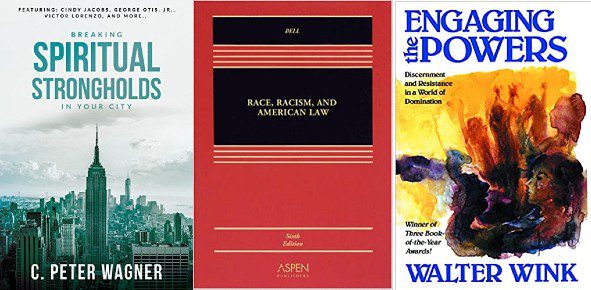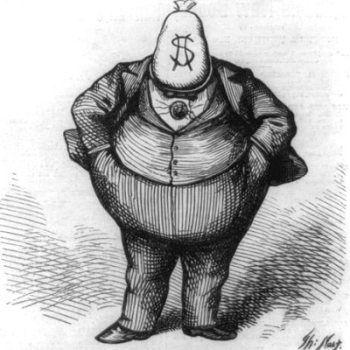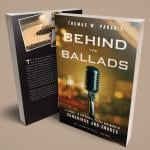“I can’t emphasize enough how rapidly the idea of Spiritual Warfare is growing,” Elle Hardy tells Katherine Stewart in their discussion of Pentecostalism.
Hardy is the author of Beyond Belief: How Pentecostal Christianity Is Taking Over the World, and this interview serves as a helpful introduction to this growing form of Christianity, which is rapidly becoming the dominant form of evangelicalism in the US. It’s the realm of Worship Pop and pop worship, of televangelism, YouTube “prophecy,” signs and wonders, and “Network Christianity” metastasizing outside of denominations, associations, and any non-market form of accountability.
Here’s Hardy describing the ideology and lore of this “Spiritual Warfare” demi-theology:
This kind of demonology allows people to merge traditional cultural beliefs with evangelicalism. This is particularly prevalent in sub-Saharan Africa, Asia and Latin America, but also in the West too.*
Spiritual Warfare isn’t simply about the salvation of individuals; there’s a belief that evil spirits operate ‘strategically,’ i.e. in geographical areas and institutions. So people who advocate these types of ideas might say that the Las Vegas strip or the Democratic Party or their local school board has been taken over by evil spirits.
The key insight there is that the “demons” of Pentecostal Spiritual Warfare always, always, always represent attacks on the pre-existing cultural beliefs and presuppositions of these Christians. Spiritual Warfare, in other words, is reactionary. It spiritualizes a defense of the status quo by portraying any form of change — negative or positive — as the strategic handiwork of a conspiracy of literal demons.

This culture-bound and culturally determined, reactionary idea of “spiritual warfare” is also at the heart of this terrific discussion among three whip-smart writers at Vox: “Revisiting the Christian fantasy novels that shaped decades of conservative hysteria.”
Here’s a bit of the introduction to that:
A sinister schoolteacher steadily grooms kids in their care to accept liberal indoctrination, ultimately leading to the takeover of young minds by shadowy forces. All the while, the teachers are backed by a larger, high-powered conspiracy to control the government, the educational system, and the national media — all in the name of evil leftists battling the ongoing culture war.
That rhetoric might sound like sheer fantasy, but it’s increasingly becoming the dominant worldview of many right-wing US conservatives, especially white evangelicals. It’s also the literal plot of two novels by Christian fantasy author Frank Peretti, This Present Darkness (1986) and its sequel Piercing the Darkness (1989). Although not household names to many, these are very likely two of the most culturally influential novels in recent history.
… Peretti envisioned a new kind of Christian fiction that visualized and vivified his idea of modern spiritual warfare: Angels and demons engaged in very real, literal battles for humanity, often just out of sight of their impassioned human charges.
Peretti’s angels and demons are humanized and captivating. The angels are all tall, hot, witty, and sophisticated, the demons are brutish and calculating; all are dedicated to their metaphysical Pokémon battle for saints. Meanwhile, prayer and faith, at both an individual and collective level, function as a kind of angel Gatorade, juicing their battery packs and helping them find the strength to defeat the enemy. These books essentially transform Christians into crucial NPCs helping their favorite video game avatars defeat increasingly awful, powerful enemies. The prize? Nothing less than the souls of mankind.
Except, of course, that the prize turns out to be nothing quite so grand. The prize — in Peretti’s novels and in the real-world “spiritual warfare” Christianity he helped to popularize — turns out not to be “the souls of mankind,” but rather the control local school boards and libraries, state legislatures, and the federal judiciary. The ultimate goal is not salvation or the kingdom of God, but merely the appointment of judges who will disregard the Reconstruction Amendments and repeal every legal advance of the second and the first Reconstruction.
The “angels” in Peretti’s novels and in Paula White’s sermons are always fighting on the same side as the white-robed Christian knights in D.W. Griffith’s The Birth of a Nation. That suggests that all this talk of “Spiritual Warfare” is nothing more than a pious disguise for Bull Connor’s firehoses or Lester Maddox’s axe handle or Frank Rizzo’s nightstick.
If that sounds too sweeping and over-broad to you, then step back and consider how this framework of “Spiritual Warfare” Christianity seems — in the abstract — like it ought to be capable of something other than a reactionary defense of white hegemony and spiritualized backlash against Reconstruction, the New Deal, and the Civil Rights Movement.
We can imagine such a thing, can’t we? What would it mean — or what should it mean — to believe that literal demonic forces are at work in the “powers and principalities”? There’s no need to cheat here by peeking at the works of Walter Wink. Just consider the actual horrors and injustices of history and consider what it would mean to view such things as the work of a conspiracy of demons.
That ought to make such believers search for signs of systemic sin and systemic corruption. It ought, in other words, to lead to a spiritual “worldview” that very much resembles something like the legal scholarship of actual Critical Race Theory. It ought to make such believers enthusiastically receptive to the wholly congruent diagnosis offered by the actual scholars of actual CRT. Their only critique of such scholarship ought to be that it’s too secular — that it fails to recognize the deeper spiritual warfare underlying the injustices it addresses.
In other words, if “Spiritual Warfare” Christianity and Peretti-ism were not inherently reactionary — if it were anything more than a culture-bound, culturally determined spiritualized defense of an unjust status quo — then we ought to be seeing the “prayer warriors” of IHOP praying their way through Kimberlé Crenshaw’s Mapping the Margins. (I mean, c’mon, “Mapping” — it’s right there.)
That’s not a joke. It’s bitterly comical, but I’m deadly serious. If “Spiritual Warfare” were anything more than a disingenuous mask for reactionary politics, then it really, truly, and absolutely ought to be predicting, expecting, welcoming, and embracing the parallel insights of Critical Race Theory.
You can’t imagine it doing that. It can’t imagine it doing that. Because it is not, in fact, what it purports to be.
Show me a Pentecostal/charismatic church practicing “spiritual mapping” to confront the demonic “strongholds” of its city and which therefore champions the removal of Confederate monuments and maybe I’ll start to rethink that conclusion. But somehow that never seems to be what “Spiritual Warfare” white Christianity produces. That tells us everything we need to know.
* I think Hardy misreads this as something “particularly prevalent in sub-Saharan Africa, Asia, and Latin America.” It is, indeed, prevalent in colonial churches founded and discipled by colonial missionaries, but this is not some indigenous movement arising from new forms of Christianity emerging in the non-Western church. It’s more of a sloppy ventriloquist act by imperial white Christianity. When Ugandan “prophets” are prophesying against Chevron deference in American jurisprudence, I have a hard time believing there’s anything spontaneously indigenous or authentic about what they’re saying. Follow the money, duh.












